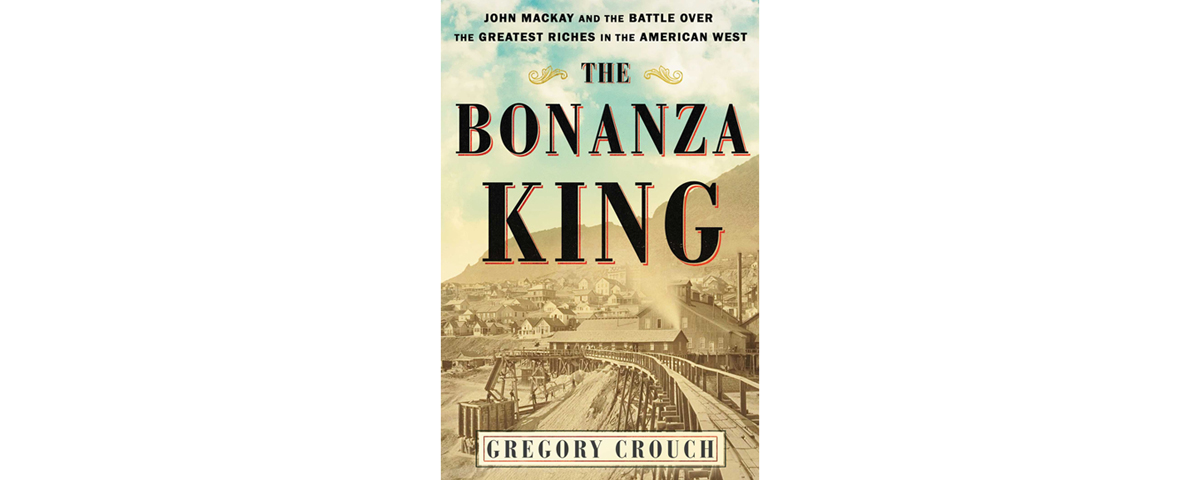The Bonanza King: John Mackay and the Battle Over the Greatest Riches in the American West, by Gregory Crouch, Scribner, New York, 2018, $30
While John William Mackay’s rags-to-riches story is largely forgotten, it once gripped the nation, and with good reason. Born in Dublin in 1831, he immigrated with his family in 1840 to New York City, where he grew up in the notorious Five Points slum and, after his father died, hawked newspapers to support his mother and sister. In 1851 he sailed to California and worked for eight years with only moderate success as a placer miner in the Sierra foothills around Downieville before migrating to the Comstock Lode in what would become Nevada. It was there—at ground central of the nation’s richest silver deposits—he found unimaginable riches and became one of the four Bonanza Kings without ever losing his legendary capacity for hard work or willingness to take the same risks underground as the average pick-and-ax miner. Mackay’s net worth in 1880 was reportedly $50 million, making him the fifth richest person in the country behind W.H. Vanderbilt, W.W. Astor, Russell Sage and Jay Gould. But Mackay was no robber baron. “In the eyes of his times,” writes author Gregory Crouch, “his road to riches had made no man poorer, and few begrudged him his success.”
Mackay fought fair in the battle against William Sharon and his “Bank Ring” cronies, men who did everything they could to achieve a monopoly in the Comstock and make the Bank of California all-powerful in Nevada. Mackay and his partners established a rival bank, the Nevada Bank of San Francisco, and eventually got the upper hand, as Crouch documents so well. Through it all Mackay complained little and remained true to his ore-solid character, finding time to give his beloved wife whatever she desired (e.g., a life in Paris instead of Virginia City) and take joy in his children. The title “Bonanza King” was never to his liking; “It makes nothing of me,” he said, “but a millionaire with a swelled head.”
Mackay was indeed much more than that, and Crouch’s book offers far more than just his tale. The author’s strong, lucid prose brings the Comstock itself to vibrant life, as he details the gritty and often dangerous world of mining—above and below ground. He seems quite at home discussing adits, drifts, crosscuts, winzes, upraises, galleries and the mules that worked alongside the men. Crouch is at his best in the chapter “The Lode’s Worst Day,” relating the underground fire of April 7, 1869, that took the lives of at least 35 men—making it the worst mining disaster in Nevada history. A sample:
The quantity of smoke in the shaft increased. On the station and in the cage, all were suffocating. In the confusion, perhaps as many as five minutes passed, until, urged by the pleading of the fellows more securely aboard, those unlucky outermost souls abandoned their holds, one by one, knowing they’d be killed during the hoist…Finally, Murphy rang the bell. The cage whooshed up the shaft. No man aboard would ever forget the pitiful desperate, choking, gagging sounds emanating from the men left behind slowly fading into the depths of the shaft as they rose toward deliverance.
—Editor





